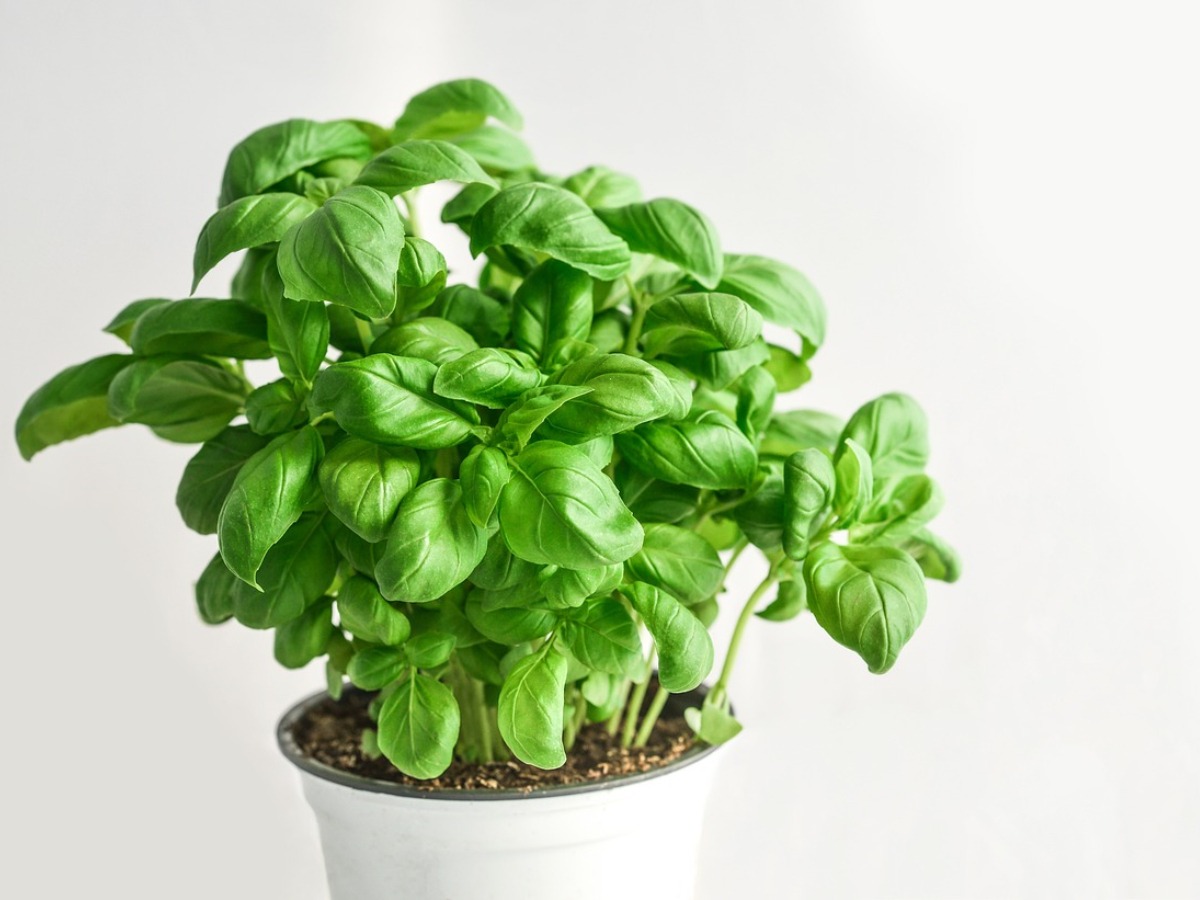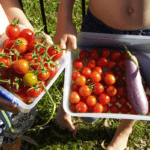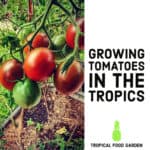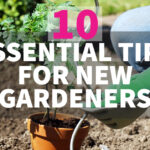This post may contain affiliate links.
You can grow many of the best healthy edible plants indoors. Here on our list you can find plants that don’t take much space and are delicious when they’re ready to harvest. The best part is, they are easy to set up, taking nothing more than some water, good soil or potting compost, and light. This light can be from indoor grow lights (which are really affordable and convenient, from a single pot light to a large shelf of indoor edible plants) or from a sunny window, it is up to you.

You can grow your indoor edible plants in pots large or small or window boxes, you can even invest in a small indoor aquaponics system for edible plants, herbs, edible flowers or even small fruits like strawberries. Just prioritise having your indoor edible plants in a location with ample light, either on a windowsill or near a window. Those indoor grow lights will always help you grow bigger plants, faster, see them here.
You can also set up a window box, a box as shallow as 6 inches can grow shallow-rooted fruit and vegetable plants. Imagine opening a window from inside your home to collect fresh produce for a meal. Choose a window box with drain holes (or drill holes yourself) that is at least 6 inches wide and 6 inches deep.
Install the window box on the sunny side of the house, facing south in the northern hemishere. In addition to installing flower boxes beneath a window, flower boxes are also suitable on a balcony, patio, fence, deck railing, or directly on the ground. Fill the flower box with fresh potting soil or a 50/50 mix of potting soil and ground soil. Plants seeds or starter plants after the last frost date as indicated by your garden hardiness zone. Either push seeds into the soil about ½ inch or drop seeds and then cover them with soil. The size of the seed generally determines how deep you plant them, but full instructions on growing seeds should be on your seed packet.
Edible Food Plants to Grow Indoors
Edible plants you can grow indoors include herbs, leafy greens like lettuce, some vegetables, small fruits like strawberries and even edible flowers. If you have a warm location and a good floor to ceiling window, you may even be able to grow fruit trees like dwarf varieties of lemons indoors.
Medicinal plants can also be grown indoors, think ginger or turmeric if your home is warm and you have good sunlight. These roots spread sideways so you’ll need a shallow, but wide pot to grow these plants indoors.
.All you need to do to produce edible plants indoors is provide the correct temperature for your edible plant to grow, good light (a grow light helps with this), nutrient rich soil or some other growing media, for instance an aquaponics set up,
This site has a lot of information on food plants to grow in the tropics, but most homes, anywhere in the world, can grow edible plants indoors, for survival, better nutrition, pesticide free food, and to save you money.
Some edible plants can be grown from supermarket scraps, we’ll mention a few of those in this post too!
Best Edible and Medicinal Herbs to Grow Indoors
Basil is a very good edible herb to grow indoors and it’s easy to propagate from cuttings or grow from seed. Just give your basil plants adequate water and light and you’ll be enjoying big fresh basil seeds in your salads all summer!
Growing Parsely Indoors
One of the easiest herbs you can grow indoors, parsley is a staple for any indoor herb bed and is very rich in nutients plus being an ingredient in many types of cuisine. You can make a salad with parsley (tabouleh), use it as a garnish or add it to any number of cooked recipes.
Sow parsley seeds 1/2-inch deep in the spring for bright green parsley leaves in the summer. The ruffled leaves of curly parsley and flat leaves of Italian parsley are rich in vitamins and add both color and flavor to dishes.
Parsley is a biennial, but because its leaves can turn bitter when the plant blooms (goes to seed) in its second year, it is usually grown as an annual.
The little pots of parsley with roots that you see in the supermarket can even be carefully divided and potted up into good compost to grow further. You may like to fertilise your potted parsley during the growing season, for edible plants home made fertilisers, compost, worm tea, or similar are better, but if you need to buy a commercial fertiliser, choose one that is natural and organic.
Growing Thyme Indoors
Culinary thyme is a perennial herb in all but the coldest climates. A sun-loving plant, itcan grow to over a foot tall but it takes a few years to get that big.
Snip off branches to use in soups, vegetable dishes, and Italian cooking. Either strip off the small leaves, or toss in whole twigs into your stews and stocks for flavoring, just remove the woody stems before serving the dish.
Thyme is drought tolerant and enjoys a free draining soil so be careful not to over-water thyme and don’t stand it permanently in a saucer of water. If left unpruned, has tiny pretty white or blue flowers in the summer.
It’s best to grow thyme from a small plant bought at a nursery as starting thyme from seed can be troublesome. Your thyme plant should be perfectly happy in a pot on your kitchen windowsill so long as it gets good light. These are the USB grow lights we use for individual plants in pots. (on Amazon)

For indoor edible plants in pots I would suggest having the grow light much closer to the plant than is shown in the image above, the posts on these lights are telescopic. The more light the plant gets the better it will grow. Our home is dark, we have deep overhanging roof, these grow lights are a game changer. As these lights have USB chargers, we use a portable battery pack for wherever we want to use them. (buy one using our link on Amazon)
Growing Chives Indoors
Chive plants grow in clumps. Their upright, hollow leaves have a delicate onion flavor, as do the edible lavender flowers.
Grow chives from seed or divide mature plants into smaller clumps in the spring to gain more starts.
Chive plants tolerate partial shade but thrive best if placed in a sunny part of your indoor herb garden.
Water the plants regularly and surround them with a layer of mulch to retain moisture around the roots and suppress weeds. Mulch is optional indoors, it’s really only essential outdoors to reduce evaporation and erosion and protect your soil microbiome, while suppressing weeds, but a mulch indoors can look pretty and save on watering. Decorative pebbles can make a nice mulch around your indoor edible plants.
Growing Tarragon Indoors
Make sure you purchase French tarragon plants for your indoor herb garden rather than the similar-looking Russian tarragon that is less flavorful. To me Russian tarragon tastes of nothing.
Tarragon requires full sun and grows best in drier, sandy soil.
Allow ample room for this perennial to spread a full 15 inches wide and up to 2 feet high. In cold climates, cover tarragon with mulch or fleece to overwinter, this shouldn’t be necessary in a heated house so long as your plants are not too close to very cold glass.
Alternatively raise this edible plant as an annual. Snip branches off the plant, then strip off the aromatic leaves for use in French dressing, roasts, tarragon vinegar and fish dishes.
Tarragon is actually my very favourite herb for flavour with fish, unfortunately it doesn’t grow nearly as well as the tropical herbs we grow outdoors, but try it indoors!
Growing Cilantro (Coriander) Indoors
Cilantro or coriander is an edible plant that delivers two types of flavor. The leaves, which look similar to Italian flat leaf parsley, add a bright taste to salsa, vegetables, Indian, and Latin American cuisine.
Left to dry after its flowers have bloomed, cilantro seed is the spice coriander , a pungent edible seed used ground in ethnic cuisines.
Plant cilantro seeds several times during the gardening season as it grows quickly and goes to seed (bolts) within four to six weeks in hot weather. This is called succession sewing and it’s how we gardeners maintain a good supply of edible plants for weeks and months on end, or even year round in some climates!
Asian saw toothed coriander can be used in the same was as cilantro, but prefers a hotter climate.
Growing Oregano Indoors
Another plant for the dry, sunny side of your indoor herb garden, oregano is a low-growing perennial with leaves that bring rich flavor to Italian and Greek sauces, pizza, and herb bread.
Depending on the variety, oregano’s tiny flowers of white or lavender emerge in midsummer, followed by a period of increased leaf production.
Oregano is drought-tolerant and should be covered with a protective layer of shredded leaves and mulch during the winter months in colder climates if it’s outside.
I successfully grow multiple varieties of oregano outside in the tropics, so I can tell you that this plant can handle high temperatures and a lot of rain, followed by a dry, but warm (down to 3C at night) winter. It won’t do as well in a wet cold winter and it will not like soggy conditions permanently.
Best Vegetables to Grow Indoors
Look for smaller varieties of edible vegetable to grow indoors. For instance, you may be able to grow small tumbler or cherry tomatoes in a pot, or a dwarf variety of chili. Always pick vegetables that you will find most useful, green vegetables like lettuce are great to grow indoors, but if you don’t like radish, don’t grow them!
Growing Lettuce Indoors
Leaf lettuce varieties like Red Sails, Salad Bow, Little Gem, and Tom Thumb are good choices for indoor container gardens.
Moisten the soil and then scatter the seeds lightly into shallow rows in your compost, cover lightly, and water them in. You don’t have to wait for a lettuce head to form, you can pick lettuce leaves daily and a fresh leaf will have a lot more vitamins and minerals than those you ca buy in the supermarket.
Lettuce takes about 50 days to mature. Cut off outer leaves as needed once you feel they’re big enough to enjoy, more will grow! Again, succession sowing is best with lettuce, so buy a bag of seed and sew a few each week. Lettuce likes the cooler months here in the tropics, we grow lettuce in autumn winter and spring. You could try at any time of year indoors.
Growing Radish Indoors
This is one of the best plants to grow indoors from seeds, this is because radishes are one of the fastest-growing plants from seed to maturation.
Choose small varieties like Cherry Belle, Comet, Early Scarlet, or French Breakfast, don’t choose the extra long radishes like daikon for indoor pots. All mature in just 20-40 days and there’s more good news, radish tops are a tasty spinach-like vegetable which can be cooked for extra vitamins and vegetable bulk
Radishes themselves can be used in saads, cooked, pickled or fermented, the fastest vegetable to grow is actually one of the most verstile too!
Space seeds about 2 inches apart in two or three parallel rows in moist soil. Poke your finger into the soil next to the growing radish to feel its size. When the radish feels a good size to eat, it is time to pull them from the soil. Replant seeds right away to grow more radishes.
With root vegetables, I’d grow them from seed in their pot, not from nursery starts, this is cheaper, obviously, and root vegetables don’t like being transplanted.
Growing Spinach Indoors
Plant any variety of spinach, like crinkle-leaf Bloomsdale which matures in about 48 days, or plain-leaf Giant Nobel which matures in 43 days. Plant seeds 2 to 4 inches apart. Cut leaves as needed or cut the whole mature plant just below the soil level.
Mature spinach is quite a large plant, but if you pick the baby spinach leaves to eat as they grow, your spinach plant will be of a reasonable size to grow indoors.
Best Fruits to Grow Indoors
Growing Strawberries Indoors
Strawberries are perennial plants. Purchase overbearing strawberry starter plants, such as Ozark Beauty, which produce two to three crops during the growing season. Set two or three in a large pot, planter, or flower box. Set the strawberry plant so the crown (that is where the stem meets the roots) is at the soil level.
Strawberry plants spread and send out runners, a strawberry tower is actually a very good pot in which to grow strawberries in a sunny spot indoors.
Best Edible Flowers to Grow Indoors
Don’t overlook edible flowers! Nasturtiums, one of the best known of the edible flowers can get huge, making them less suitable edibles to grow indoors, but have you considered pansies? Chives also have edible flowers and would look great in a pot on a windowsill indoors.
You want your indoor edible plants to be decorative, what’s better than flowers!
Growing Pansies Indoors
You might not consider pansies as food, but the blooms are edible. Choose red, yellow, blue, white, or bi-colored petals. Plant in spring after danger of frost. Create an opening in the soil the same size and depth as the nursery container. Set plants about 6 inches apart. Spread 1 to 2 inches of mulch around the plants to help retain moisture. The taste of pansy petals is similar to wintergreen. Use the petals to decorate cakes or flavor soups or salads. Take a look at some recipes using edible pansies here.
Your indoor herb garden may be a formal vision of symmetrical splendor, a whimsical hodge-podge of herbs and flowers, or somewhere in between. Whatever your gardening style, edible plants in the indoor herb garden give it pungency and support a sustainable approach to flavorful cooking. A combination of old favorites and lesser-known herbs brings variety to both your indoor herb garden and your meals.







